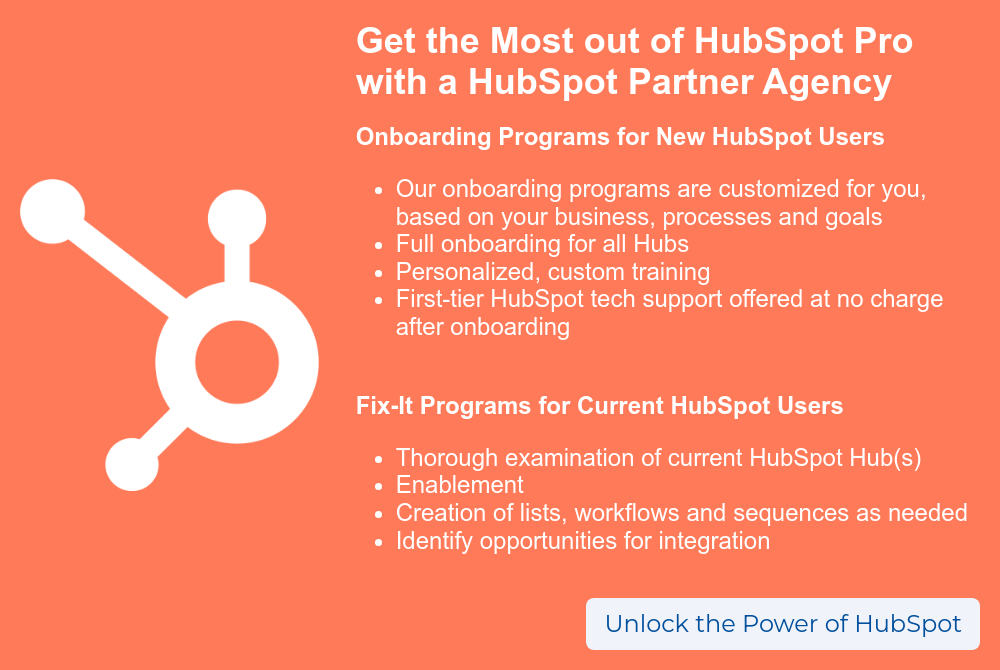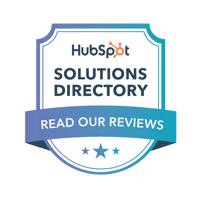One of my favorite HubSpot features is the wealth of reporting tools. It's also one of the most frustrating features.
Why? It takes a lot of work to make sure everything is set up correctly. With dozens of moving pieces, multiple team members, and an avalanche of data, it quickly becomes overwhelming.
When everything is perfectly aligned, it's magic. When even one element is off, it can get messy fast.
If you're not getting the reporting you wanted out of your HubSpot campaigns, I've been there - and I have some insights from our teams on how to fix it.
How to Get Better Reporting From Your HubSpot Campaigns
1. Set up campaigns the right way
You have nearly unlimited options when it comes to setting up campaigns, but lots of choices can also lead to chaos.
Say it after me: campaigns are not segmenting. You can - and should - segment your contact lists by any number of factors (lead status, age, location, industry). You shouldn't do the same for your campaigns. Why? HubSpot campaigns are for reporting on marketing efforts, not for organizing your CRM.
More specifically, a marketing campaign is a collection of content, ads, and other relevant assets that all support a clear goal. This is different from your general marketing goals of growing your audience. Most often, campaigns are focused around a specific product, service, or inbound marketing asset. Another way to think of a campaign is to think of it as a specific marketing or sales funnel. For example - all of Apple's marketing is not a campaign. But their Shot on iPhone marketing is part of one campaign.
This is the same definition that HubSpot uses for its campaigns. The purpose of the campaign section in HubSpot is to be able to quickly pull all content assets together for review, so you can determine if your campaign has reached its goal(s).
If you have a bunch of campaigns that are centered around segmenting vs. reporting, start by removing irrelevant campaigns. Make sure your team is on the same page regarding campaign creation. Additionally, if you have multiple team members it's a good idea to do a quick audit of all your campaigns to ensure that no one on your team has inadvertently created duplicate campaigns.
2. Regularly clean up your contacts
Even though the campaigns tool and CRM are two different areas in HubSpot, you're not going to be able to pull accurate reporting if your CRM is disorganized. It's a good idea to keep your CRM tidy, and it's critical for pulling accurate campaign data.
When starting the clean-up process, make sure that:
- Lead status/lifecycle tracking is up to date
- Source tracking is functional and accurate
- All contact lists are still relevant
- Your employees are using a standardized, consistent process for data entry
- All duplicates and bad data have been removed
Once your data is clean and up-to-date, then you can pull accurate data from your campaign reports - especially for key metrics like closed deals and influenced revenue.
→Read Now: How to Import Your Contacts Into HubSpot's CRM
3. Ensure all assets are associated with the right campaign
One of the benefits of campaign tracking in HubSpot is that it pulls all relevant content and assets together - but only if everyone is proactive in associating content with relevant campaigns. In HubSpot, you can associate the following with a specific campaign:
- Forms
- Blog posts
- Emails
- Landing pages
- Website pages
- Ad campaigns
- Calls-to-action
- Social media posts
- Workflows
- Lists
Any of the above tied directly to a campaign must be associated with that campaign. It's something your team should be doing as they schedule and post assets in HubSpot - but it's easy to overlook.
Ensure that associating assets and content with relevant campaigns is a part of the posting process. That's not to say that every piece of content needs to be associated with a campaign - you very likely will still have assets in the above list that aren't part of a specific campaign. But every asset that promotes a campaign needs to be associated with that campaign. This will allow you to get accurate data when looking at campaign reporting.
4. Review campaign analytics with your entire marketing team
Each person on your team has their own particular focus, as well as unique insights. Another way to get better reporting is to take the time to review campaign analytics as a team.
Not only does it make sure the entire team has transparency, but also allows for easy collaboration and brainstorming.
And since it pulls all content in one place, it's a lot easier to see where any gaps might exist.
5. Work with a HubSpot Partner Agency
HubSpot is a significant investment. If not implemented and used properly, you're not getting the most out of this powerful tool. You can go it alone, but working with a HubSpot partner agency means that you don't need to become an expert in HubSpot to get up and running.
 BizzyWeb is a HubSpot Platinum Partner: we offer full-service HubSpot onboarding, enablement and strategy for all hubs. Our team has over 196 certifications in HubSpot (and constantly growing). No matter what your HubSpot needs are, our team is ready to handle them.
BizzyWeb is a HubSpot Platinum Partner: we offer full-service HubSpot onboarding, enablement and strategy for all hubs. Our team has over 196 certifications in HubSpot (and constantly growing). No matter what your HubSpot needs are, our team is ready to handle them.
Plus, we are the only agency in Minnesota with a Platform Enablement Accreditation from HubSpot - sounds fancy, but it means we're top-notch in making HubSpot work within your business.
BizzyWeb is a Minneapolis-based digital marketing and web design agency that helps companies get the high-quality leads they need to grow and thrive. Our tactics include inbound marketing, SEO, advertising, web design, content creation and sales automation. We are an accredited HubSpot Platinum Partner and we offer full-service HubSpot onboarding, enablement and strategy for new and current users.





